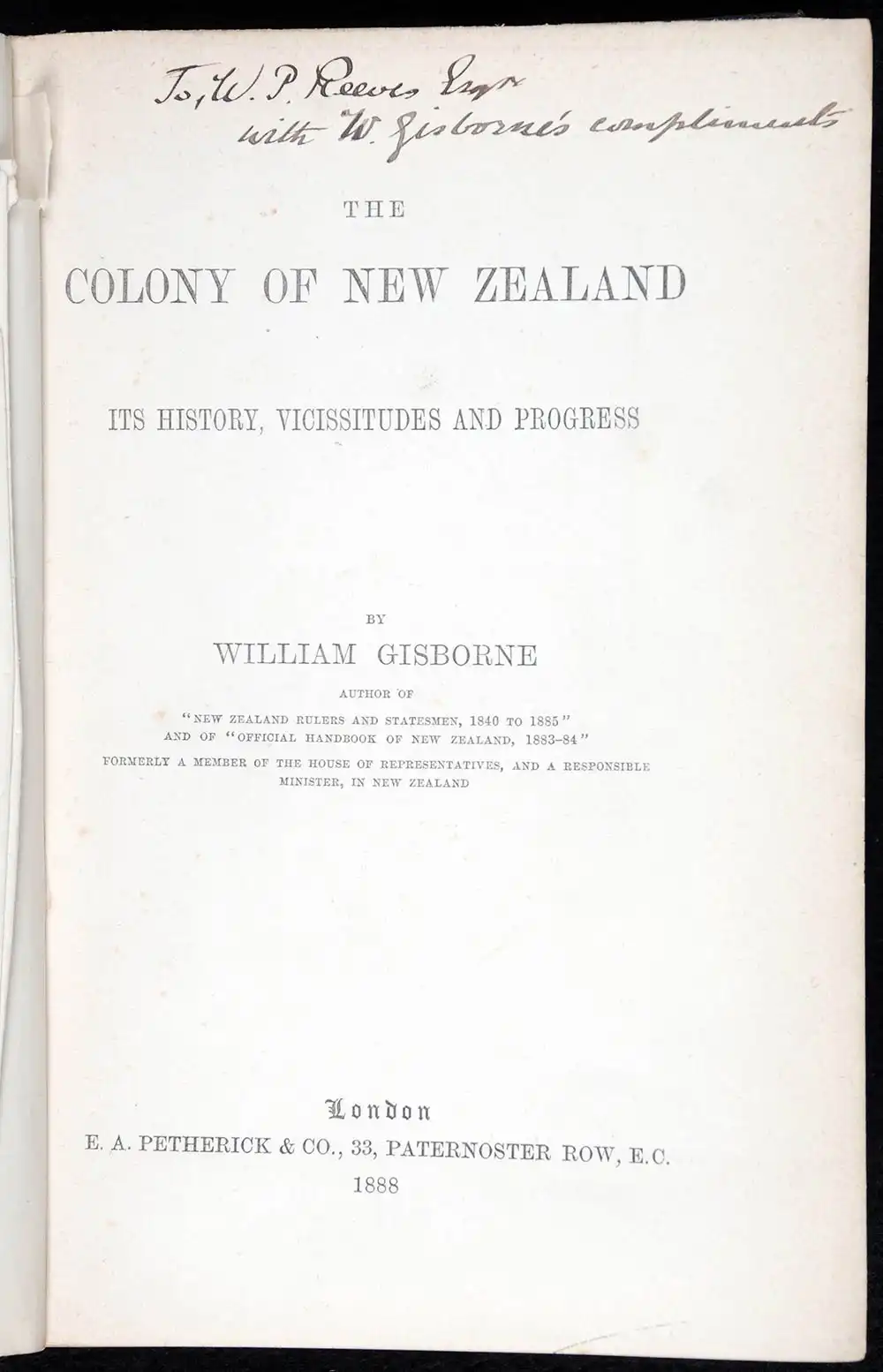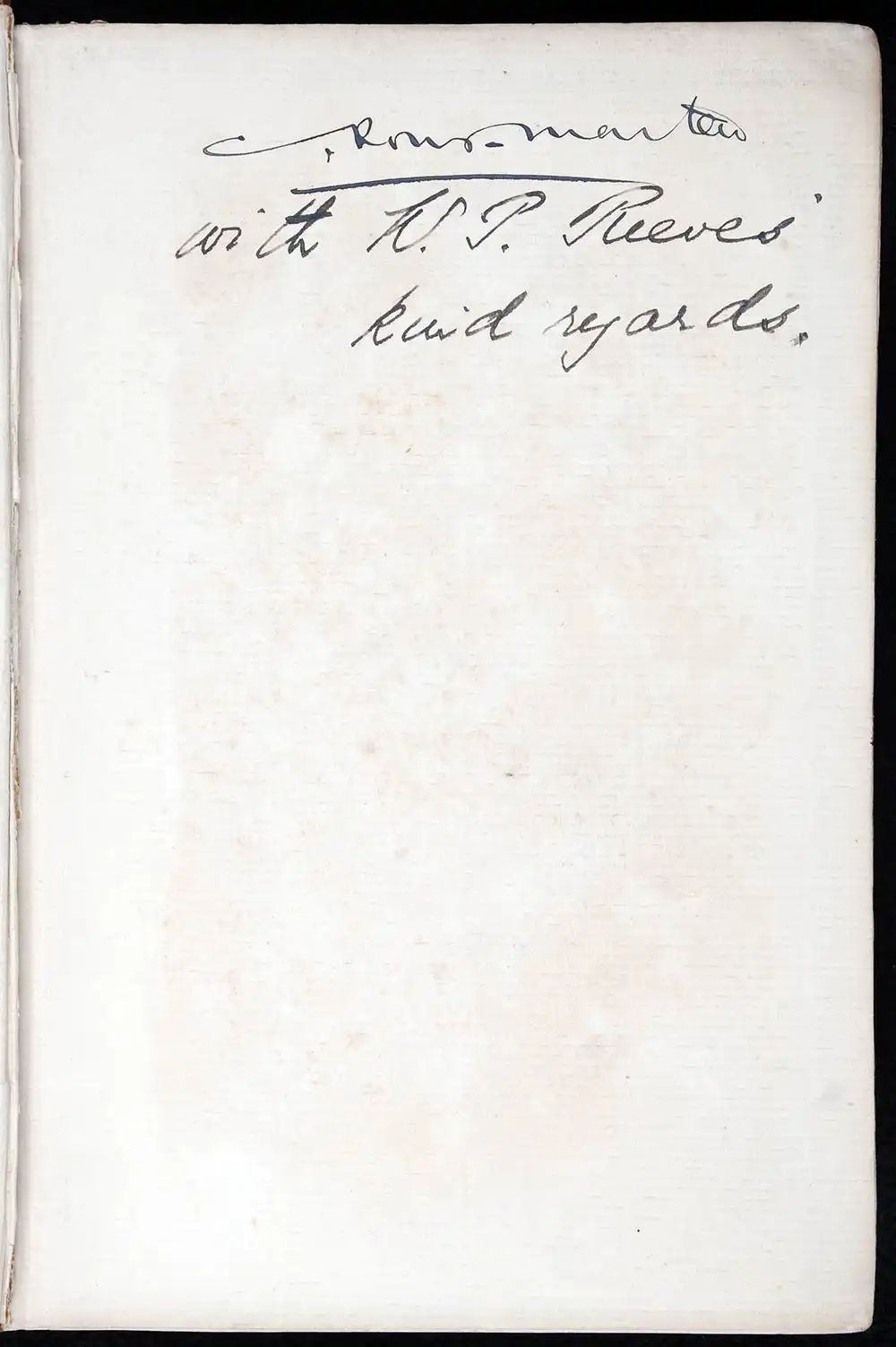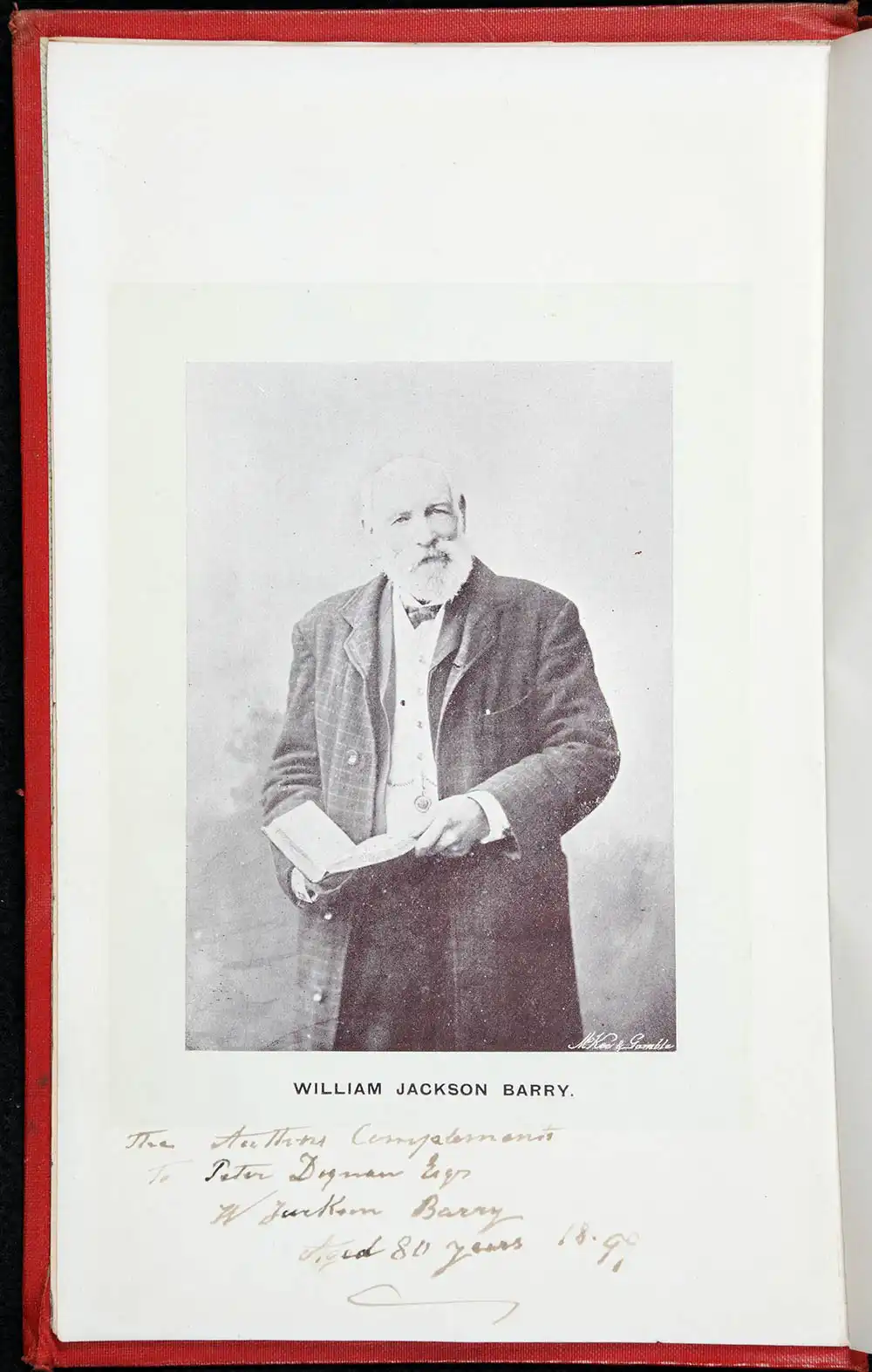Case 16
- Authors’ Presentation Inscriptions (N.Z.) 3

William Gisborne. The colony of New Zealand: its history, vicissitudes and progress. London: E.A. Petherick, 1888.
The
title page of this copy of William Gisborne’s early account of New Zealand
bears his presentation inscription to William Pember Reeves.
Gisborne
(1825-1898), civil servant, politician and writer, was the author of two
important books on the colonial era: New
Zealand rulers and statesmen (1886) and The
colony of New Zealand (1888). He is remembered by having had the city of
Gisborne named after him.
Reeves
wrote of Gibson: “In the House of Representatives he was the mildest of men,
yet as a writer of political articles he had a trenchant style with quite
unsuspected powers of banter and sarcasm.”
When he
acquired the book in 1929, A.H. Reed, with characteristic courtesy, wrote a
letter to Reeves offering to return it to him. Reeves responded with gratitude
that the copy would be best served in the Dunedin Library, noting that
“Gisborne’s autograph will always give it a certain value and interest.”

William Gisborne. The colony of New Zealand: its history, vicissitudes and progress. London: E.A. Petherick, 1888.
Open image in new window

William Pember Reeves. The long white cloud: Ao Tea Roa. London: Horace Marshall & Son, 1898.
This
first edition of William Pember Reeves’ The
long white cloud contains his signed presentation inscription to Charles
Rous-Marten (1842-1908). Both men were in England at the time of publication
and both were trained journalists.
Reeves
(1857-1932) appears to have used this copy in preparation for a second edition.
Corrections are noted in the margins, and notes, seemingly additions to the
text, are inserted. Curiously however, these corrections were never used in
subsequent editions. The reason for this remains a mystery, as does the reason
for his gift of this particular copy to Rous-Marten.
The long white cloud became the standard
interpretation of New Zealand history until the 1950s.

William Jackson Barry. Past & present, and men of the times. Wellington: McKee & Gamble, 1897.
This
book contains Jackson Barry’s autograph presentation inscription to Peter
Dignan (1847-1922), the first New Zealand-born Mayor of Auckland.
‘Captain’
William Jackson Barry (1819-1907) was a notorious English-born adventurer and
writer, who travelled widely before his peregrinations finally took him to
Otago in 1862. As described by Ronda Cooper in the Dictionary of New Zealand Biography: “Turning with enthusiasm to
any likely enterprise, he moved constantly from place to place, following
opportunity, making and losing several large fortunes.”
One
notable exploit was his acquisition of a fin whale skeleton at Nelson in 1882
which he subsequently towed south by cart, displaying it for a fee at various
towns, before finally reaching Dunedin, where it still resides in Otago
Museum’s Maritime Hall.


